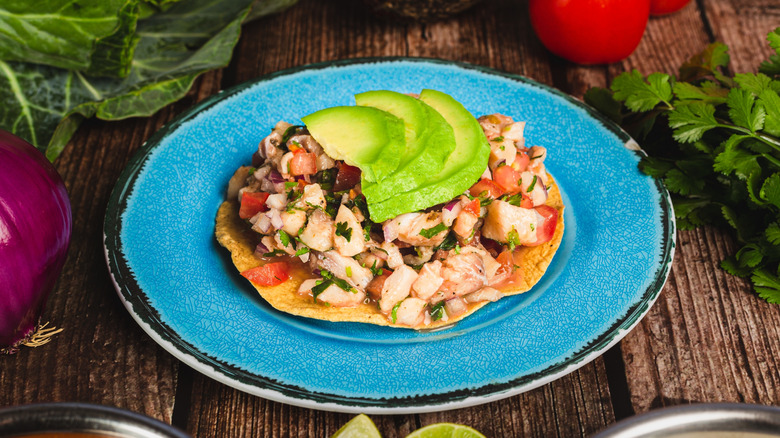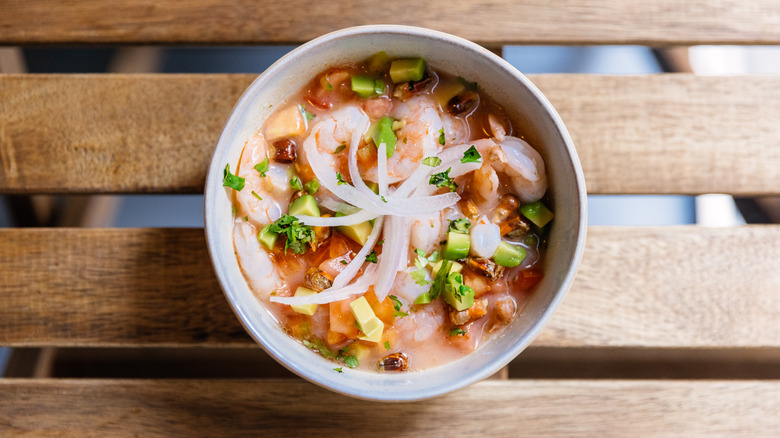Here Are The Best Types Of Fish To Use For Deliciously Traditional Ceviche
While some may think of ceviche as "Mexican sushi," the seafood used to make it doesn't taste quite so raw. While it isn't cooked using a traditional, heat-based method, it does get pickled in acidic lime juice. Many different types of fish will work for ceviche, but every cook has their favorites.
That's why we asked Mexican-born chef Jorge Guzmán for some tips on creating what we at The Takeout consider to be the perfect summertime lunch. Guzmán, a James Beard Award finalist and the chef behind the Minneapolis restaurant Chilango, says his personal preference is for saltwater fish. He's particularly partial to firm-fleshed white varieties such as sea bass or snapper. He doesn't only stick with white fish, however, since he tells us, "I also love using tuna and ono." The latter, also known as wahoo or Pacific kingfish, is a species of Spanish mackerel.
However, Guzmán does say, "I usually avoid freshwater fish or any that are known to carry parasites." Though freshwater fish are more likely to carry parasites, all fish are susceptible. In this case, fresh fish isn't always better than frozen. In fact, commercially flash-frozen fish is your safest bet for uncooked preparations such as ceviche, since parasites can be killed at -4 degrees Fahrenheit. Otherwise, make sure it is very freshly caught and stored continuously on ice.
Shellfish can also be used in ceviche
While the original ceviche — which was created in Peru, not Mexico — was made with fish, things do change over the centuries. For one thing, lime juice has long since replaced the chicha (a fermented corn juice) that was used by pre-Columbian Peruvians. For another, fish is not the only thing ceviche can be made with. Jorge Guzmán says he's a fan of shellfish ceviche, telling The Takeout, "I also love using octopus and shrimp."
Ceviche made with shellfish is also quite popular now, to the point where you're likely to find ceviche de pulpo (octopus), calamar (squid), or camaron (shrimp) on the menu of a Mexican restaurant alongside fish ceviches. Conch and even lobster may also be featured, or the dish could include a mixture of several different types of cooked and raw seafood. In a pinch, it's even okay to use surimi, aka "krab," for a budget-friendly version.
Aguachile, which is similar to (but totally not identical to) ceviche, is typically made with shellfish — usually shrimp but scallops can also be used. The main difference between the two dishes is revealed in the name of the former. Aguachile translates to "chile water," and the seafood, rather than being marinated in lime juice, is instead tossed in a spiced and acidic liquid just before serving. Lime may be used for flavoring, but in a true aguachile, the juice isn't meant to "cook" the seafood to the same extent as it does in ceviche. As such, the texture of the seafood in an aguachile is closer to its untouched, raw state.

